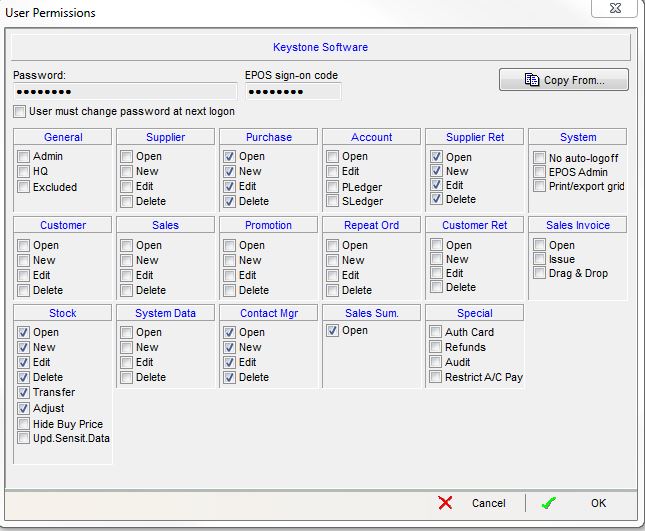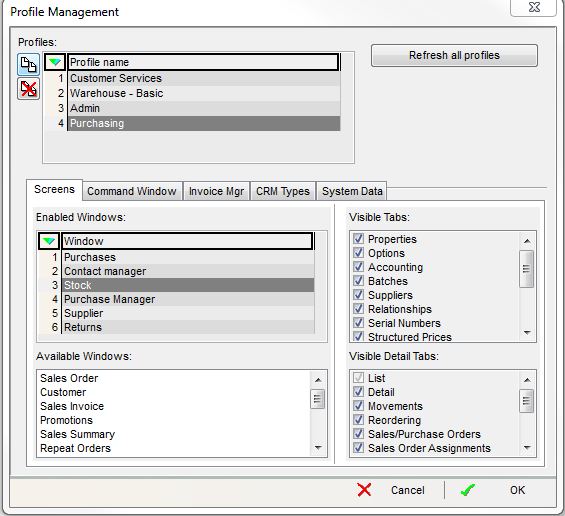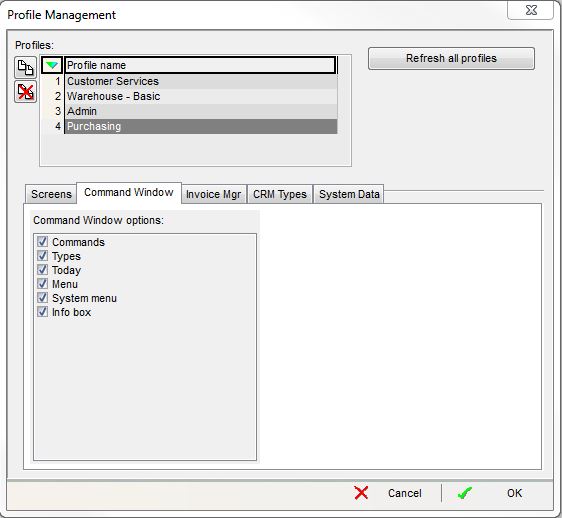How To: Create a New Purchasing User
Overview
When creating a new user with a specific role, it is necessary to define both permissions (what they can do) and a profile (what they can see). As a rule, it is best to start by setting permissions and access to the minimum levels possible for the role in question. Extra permissions and access can then be added in if and when required. Here is an exemplar of how a new Purchasing User might be created and set up. In this scenario, our Purchasing User is also responsible for Supplier Returns and is able to transfer stock and adjust stock quantities.
Creating New User
- Open a System Data screen.
- Double click on
[ Others | Users ]. - Press Alt+E or click
 to enter edit mode.
to enter edit mode. - Press F3 or click
 to add a new item.
to add a new item. - Enter the details of the new user (see Users for a description of the grid columns).
- Press Ctrl+S or click
 to save the new user.
to save the new user.
Setting User Permissions
- Select User Permissions from the right-click context menu and set these as required.
Below is a screenshot of typical settings that might be used for a Purchasing User - these may need to be adjusted to suit specific business requirements, for example:
- The permissions for Supplier Returns could be disabled if this responsibility is given to a separate operative
- The ability to adjust stock quantities and locations may also be disabled if appropriate

Creating User Profiles
- Right click on the grid and select 'Define Profiles'.
- Select 'Yes' to the information dialog displayed.
- Click on
 to add a blank profile to the bottom of the Profiles grid.
to add a blank profile to the bottom of the Profiles grid. - In the Profile Management dialog add a name for the profile and select it.
- In the Screens' tab, drag and drop screens required for the profile from the Available Windows grid into the Enabled Windows grid.
- Untick the Visible Tabs and Visible Detail Tabs that are not required for the profile for every enabled screen.
- In the Command Window tab, check the Command Window options that are required for the profile.
- In the Invoice Mgr tab, check the stages that are required for the profile.
- In the CRM Types Tab check all the CRM Types that will be blocked for this profile.
- Click on 'OK'.
Below are screenshots of typical settings that might be used for a Purchasing User - these may need to be adjusted to suit specific business requirements, for example:
- Although a purchaser may be allowed to view stock screens, permissions to edit these may still be enabled or disabled
- In this case, viewing of the returns screen is enabled, which may not be necessary in some organisations


